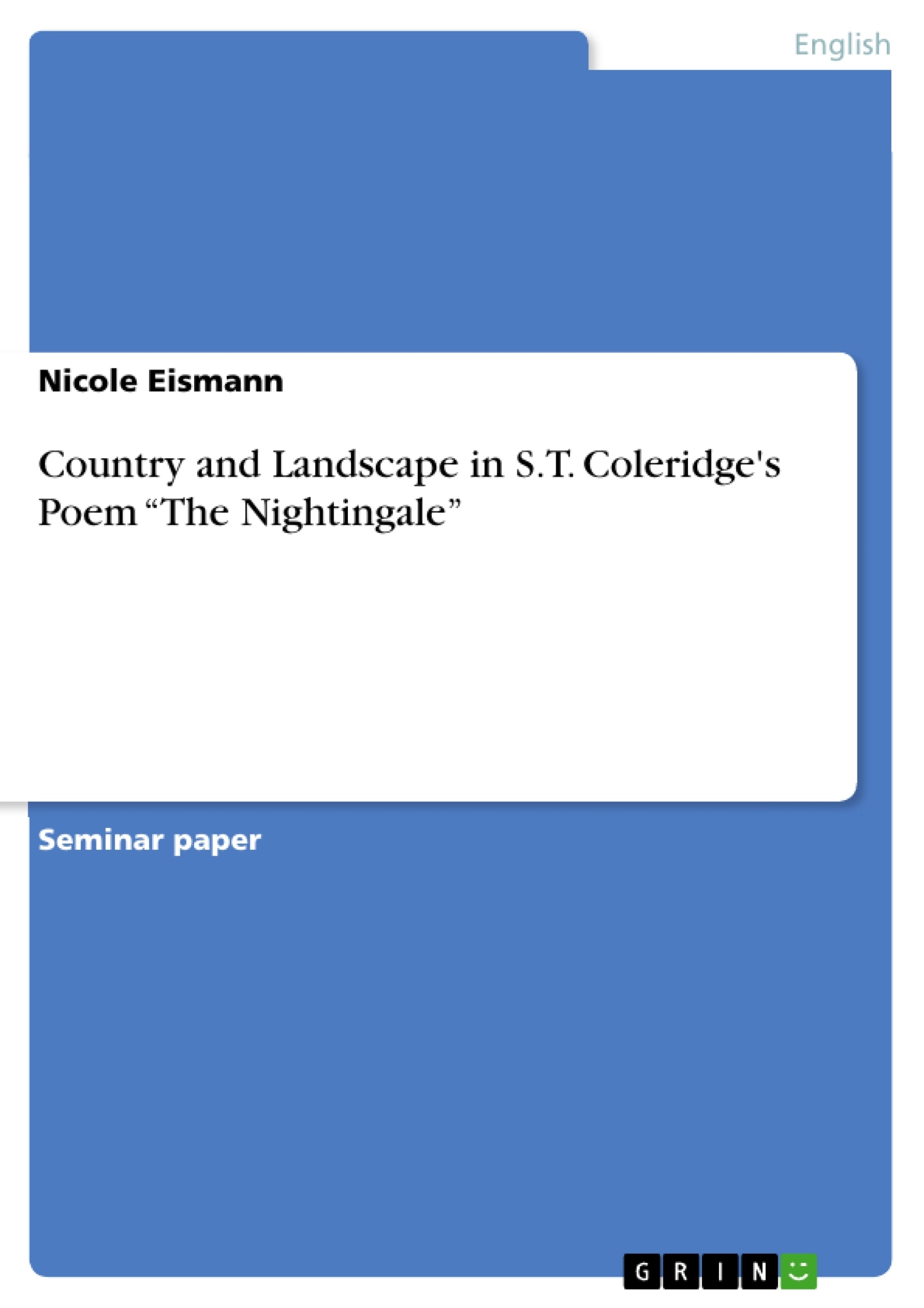In this paper, Samuel Taylor Coleridge's poem “The Nightingale” will be discussed in terms of its not so common structure and its textual aspects, with a special focus on the depiction of landscape and the role of the nightingale as the poem's leitmotiv.
The latter part also includes a detailed discussion of all humans that are directly or indirectly involved, and their different relationship with nature. In the end it will be demonstrated, in how far a specific language use supports the writer's intention and the image of nature and countryside which is offered throughout the poem.
After its first publication in Coleridge's and Wordsworth's mutual work Lyrical Ballads in 1798, “The Nightingale: A Conversation Poem” has been a highly polarising poem among critics. While many reviewers criticise first of all the structure of the poem, George Watson called it “one of the most considerable of Coleridge's poems”. It belongs to the group of conversation poems, which has not been given its name by the author but later, in the 20th century, by critics, who grouped eight of Coleridge's poems together and used the subtitle of “The Nightingale” as an overall description of the group. Conversation poems are built up like conversations between the speaker and one or more explicitly named addressees inside the poem.
In most of the poems, Coleridge's wife Sara Fricker or/and their son Hartley are addressed directly. “The Nightingale” marks the only exception since the conversation in this poem happens between Coleridge and his friends, William and Dorothy Wordsworth. All conversation poems share the common topics of men's relationship with nature, explicit experiences with nature itself and God's appearance in nature. Furthermore, they are written in blank verse and share a tripartite structure – either in form of a 3-time-structure or as a semantic division, also a combination of both is possible, e.g. in “Frost at Midnight”.
Inhaltsverzeichnis (Table of Contents)
- Introduction
- Structure of the poem
- Depiction of nature and mankind
- Landscape and the role of the nightingale
- The connection of men with nature
- Language use for the depiction of nature
- Conclusion
Zielsetzung und Themenschwerpunkte (Objectives and Key Themes)
This paper analyzes S.T. Coleridge's "The Nightingale: A Conversation Poem" focusing on its structure, the depiction of landscape and the role of the nightingale as a leitmotiv, and the connection between humans and nature. The analysis aims to understand how the poem's language and structure contribute to the overall theme of nature and its impact on human experience.
- The structure of "The Nightingale" as a conversation poem
- The role of the nightingale as a leitmotiv
- The depiction of landscape and its relationship to human emotion
- The different ways in which humans connect with nature
- The use of language to convey the beauty and power of nature
Zusammenfassung der Kapitel (Chapter Summaries)
The Introduction provides context for the poem, highlighting its significance and the critical debate surrounding it. It also establishes the poem's position within the group of conversation poems and its focus on the relationship between humans and nature.
The second chapter, "Structure of the poem," examines the poem's structural elements, including its blank verse form, tripartite structure, and the role of the nightingale as a leitmotiv. It analyzes how the poem's structure contributes to its overall theme and meaning.
The third chapter, "Depiction of nature and mankind," delves into the poem's portrayal of landscape and the nightingale, exploring their significance in the context of human experiences. It also examines the various relationships between humans and nature, highlighting the different perspectives presented in the poem.
Schlüsselwörter (Keywords)
The keywords for this paper include: conversation poem, nightingale, leitmotiv, landscape, nature, human experience, blank verse, tripartite structure, Coleridge, Wordsworth, Gothic, poetry, language, imagery.
- Quote paper
- BA Nicole Eismann (Author), 2014, Country and Landscape in S.T. Coleridge's Poem “The Nightingale”, Munich, GRIN Verlag, https://www.grin.com/document/319150




